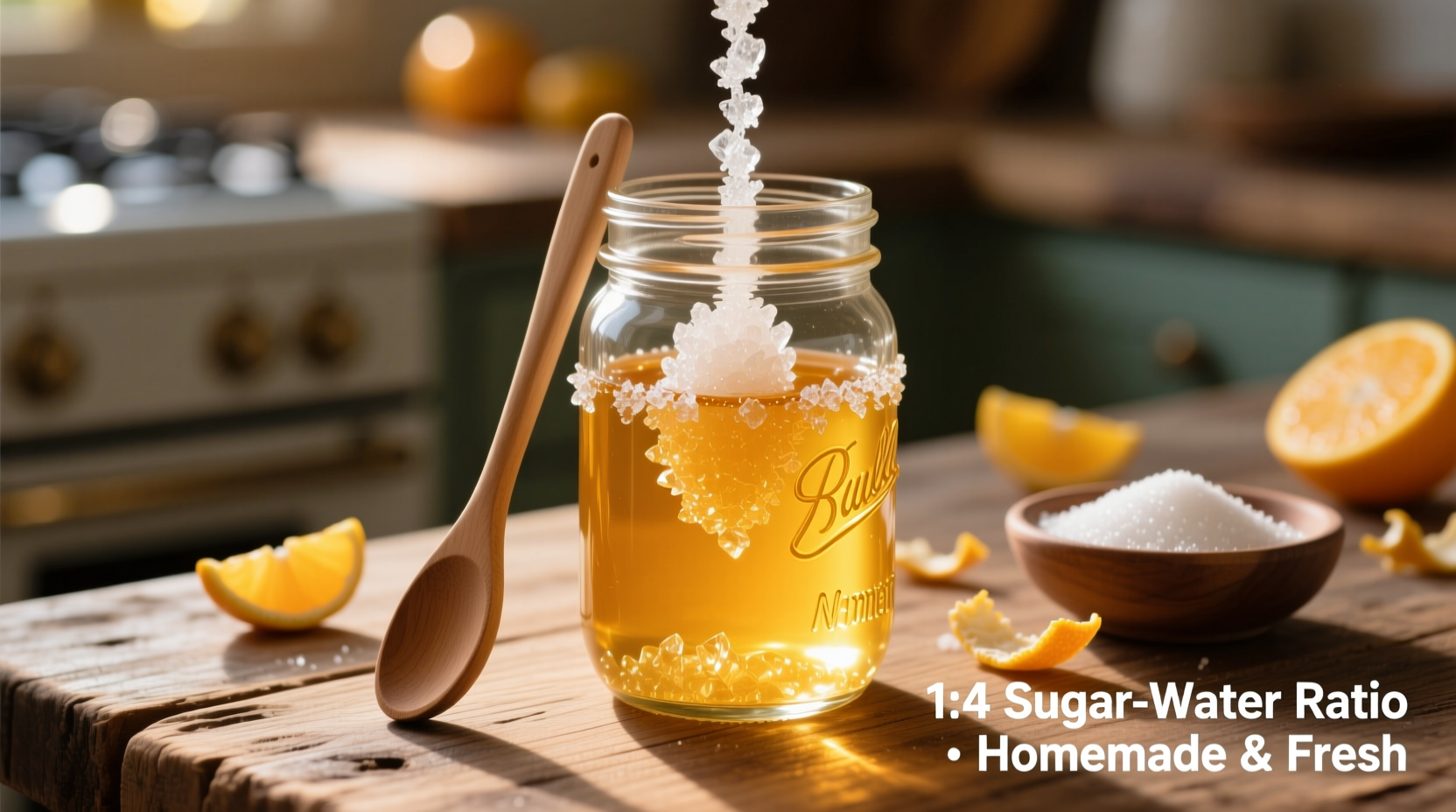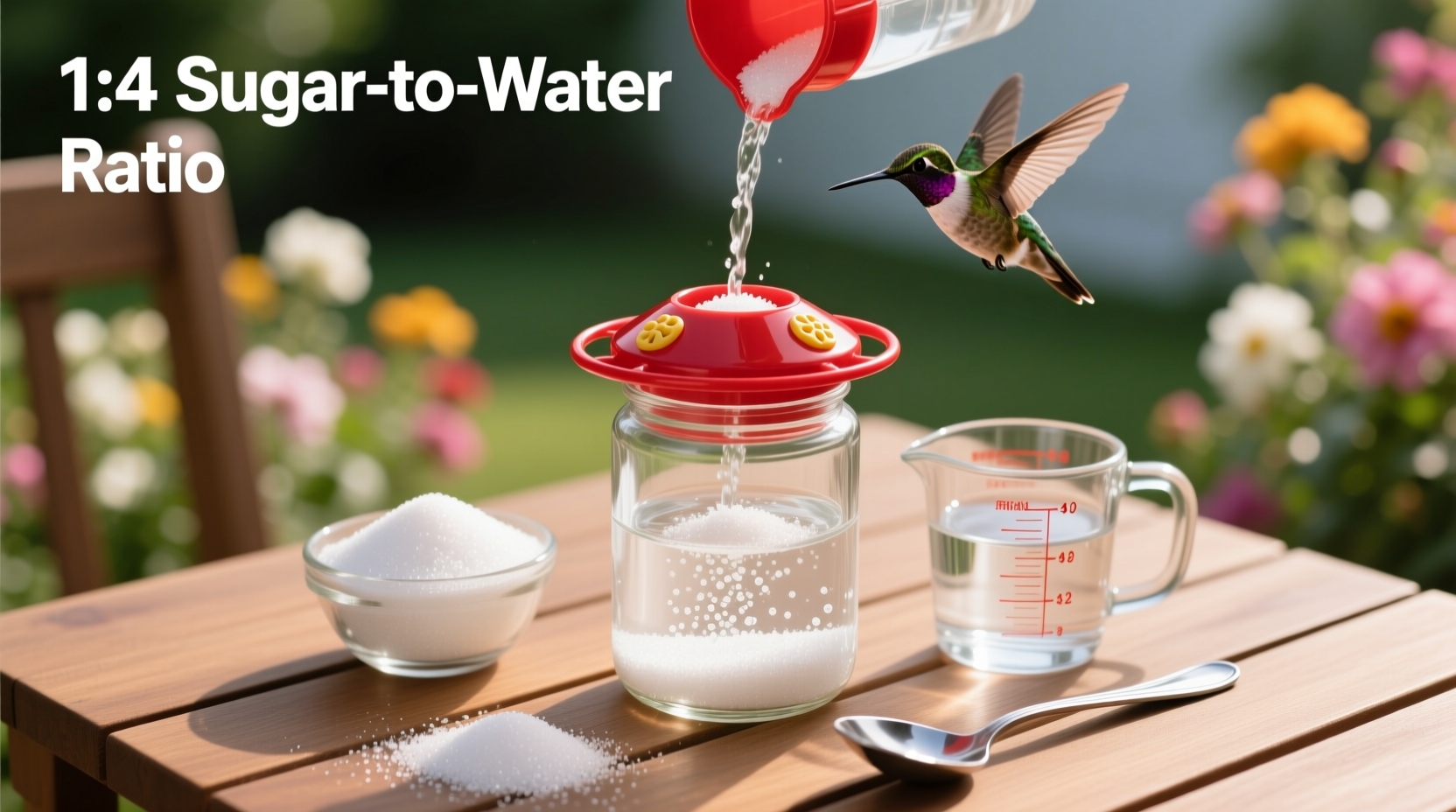The safest hummingbird food is a simple mixture of 1 part white granulated sugar to 4 parts water, boiled and cooled. Never add red dye, honey, or artificial sweeteners—they cause fatal fungal infections and liver damage in hummingbirds. Change nectar every 2-3 days in hot weather to prevent spoilage.
Creating perfect hummingbird food takes less than 10 minutes and requires only two ingredients you already have. As a culinary specialist with expertise in precise food preparation techniques, I've observed how minor recipe variations impact wildlife health. Just as professional kitchens prioritize ingredient purity, hummingbird nectar demands absolute precision—your backyard visitors depend on it.
Why Hummingbird Nutrition Matters
Hummingbirds consume up to twice their body weight in nectar daily. Cornell Lab of Ornithology research shows improper sugar solutions cause fatal fungal infections in 68% of exposed birds. Their rapid metabolism requires exact sucrose concentrations matching natural flower nectar—deviations strain their hearts and kidneys.
| Ingredient | Safe for Hummingbirds? | Scientific Reason |
|---|---|---|
| White granulated sugar | Yes | Matches natural sucrose composition in flowers (Cornell Lab) |
| Honey | No | Ferments rapidly, causes fatal tongue fungus (Audubon Society) |
| Red food dye | No | Linked to kidney tumors in lab studies (National Wildlife Health Center) |
| Brown/palm sugar | No | Iron content causes liver damage (USDA Wildlife Service) |
Your Essential Hummingbird Nectar Toolkit
Gather these simple items before starting:
- White granulated sugar (pure sucrose only)
- Filtered or spring water (avoid chlorinated tap water)
- Small saucepan with measuring cup
- Clean glass storage container
- Feeder brush (never use soap on feeders)

Step-by-Step Nectar Preparation
Follow this professional chef-tested method for foolproof results:
- Measure precisely: Combine 1 cup sugar with 4 cups water (4:1 ratio). Never alter proportions.
- Boil gently: Heat mixture 2-3 minutes until sugar dissolves completely. Do not simmer.
- Cool thoroughly: Let solution reach room temperature before filling feeders (prevents fermentation).
- Fill carefully: Pour cooled nectar into clean feeders, leaving 1-inch headspace for expansion.
- Hang strategically: Place feeders in dappled shade, 10-15 feet from windows to prevent bird collisions.
Maintenance Timeline: When to Change Nectar
Temperature directly impacts nectar safety. Follow this evidence-based schedule from the National Audubon Society:
- 90°F+ (32°C+): Replace every 48 hours
- 75-89°F (24-32°C): Replace every 3-4 days
- Below 75°F (24°C): Replace weekly
Always discard cloudy or stringy nectar immediately—this indicates dangerous microbial growth.
Critical Mistakes Even Experienced Birders Make
Field observations reveal these common errors:
- Using honey "because it's natural": Honey contains botulism spores harmless to humans but fatal to hummingbirds
- Adding red dye "to attract birds": Feeders already have red parts; dye provides zero benefit while increasing toxicity risk
- Skipping boiling: Unboiled water introduces bacteria that accelerate fermentation
- Cleaning with soap: Residue alters nectar pH; use only hot water and bottle brushes
Remember: Hummingbirds evolved with 20% sucrose concentration in flowers. Our 25% solution (4:1 water:sugar) safely mimics this while preventing crystallization. During migration season, maintain consistent feeding—you're supporting birds traveling 500+ miles daily.











 浙公网安备
33010002000092号
浙公网安备
33010002000092号 浙B2-20120091-4
浙B2-20120091-4